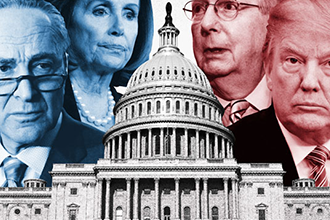Prior to the elections, the country seemed focused primarily on the hopes for “blue wave” for Democrats or “red tsunami” for Republicans in Congress, but what happened in 50 states legislatures and statewide races is also of great importance to our industry. Most statutory and regulatory issues that impact electronic security come at the statewide level and it is there that we maintain the greatest vigilance. Here, we will give a quick recap and analysis of both federal and statewide elections with a focus on how the results will impact the economy and potentially, your business. Prior to the elections, the country seemed focused primarily on the hopes for “blue wave” for Democrats or “red tsunami” for Republicans in Congress, but what happened in 50 states legislatures and statewide races is also of great importance to our industry.
Most statutory and regulatory issues that impact electronic security come at the statewide level and it is there that we maintain the greatest vigilance. Here, we will give a quick recap and analysis of both federal and statewide elections with a focus on how the results will impact the economy and potentially, your business.
While the Democrats did gain control of the US House, Republicans will likely gain seats (as at least three (3) are still in question) in the Senate, leading to a divided government at the federal level. It will be interesting to see how these results will impact more universal issues for the industry like taxes, health care and federal regulations.
Whether we see divided government work as it did with political odd couples like Everett Dirksen and Lyndon Johnson in the 1960s, Tip O’Neill and Ronald Reagan in the 1980s or Newt Gingrich and Bill Clinton in the 1990s remains to be seen. Will Congress legislate or investigate, seems to be the question of the day.
Can Trump and Nancy Pelosi be the next odd couple, or will extreme factions effectively grind Congress to a halt? Good arguments can be made for both outcomes, but with Donald Trump as President, it is likely executive orders that reduce regulatory burdens will continue and the appointment of conservative appellate judges and possibly one or more Supreme Court justices could have a transformative effect well beyond his tenure as president.
At the state level, Democrats did make gains in state legislative races and control over Legislatures, but they fell far short of the cumulative gains Republicans made in 2010 and 2014. Prior to the elections, 31 state Legislatures were in Republican control and 14 Democrat, with four (4) divided.
Post-election, Republicans maintained control in 30 states and Democrats increased its control to 18 Legislatures. The number of divided Legislatures was reduced to just one (1) in Minnesota. With these relatively minor changes in overall legislative control, I would not expect much change in the current course for most legislatures.
Another very important factor for the next two (2) years and for future elections are Governor races. When redistricting occurs after the 2020 census, it is often the Governor who has final review, short of lawsuits on how legislative and congressional districts are drawn. Some states have moved to independent commissions, but by and large congressional districts remain the duty of state legislatures with Governors having potential veto power.
Gubernatorial races were held in 36 states, with 19 running for re-election and 17 term-limited. Democrats made gains by flipping seven (7) states from Republican to Democrat, thus decreasing the numerical edge for Republicans to 27 states with 23 now in Democrat control. The only wild card thus far is in Georgia, where the Democrat Stacey Abrams has not yet conceded. Governors, like the President, also have tremendous impact over the direction legislatures go because they have veto power and can project that to legislative leaders.
This election also demonstrated that voters seem to like divided government. This was evidenced in states like Maryland, Vermont and Massachusetts, which are viewed as being Democrat strongholds, where voters kept Republican Governors and in Pennsylvania, where Republicans control both chambers in the legislature, but maintained their Democrat Governor.
With the Democrats’ gains in some legislative chambers and Governor races, divided states increased rather significantly. Now, Republicans hold power in the House, Senate and Governor – in 21 states; Democrats control 14 states; and, 13 states are now divided. Republicans still hold a significant majority at the state level overall, but it is clear that more states will have to work harder to move legislation, with more compromise being the secret ingredient.
Compromise and collaboration are what voters hope for and when this happens, the markets (and the economy) generally respond favorably, as they did in the 1960s, 1980s and 1990s with the familiar odd couples leading the way. Can we hope for a similar outcome as we head to 2020? What happens in the next elections will be driven largely by the answer to that question.




